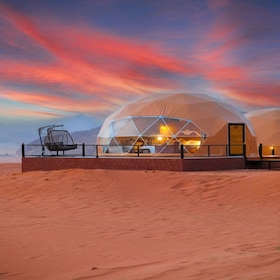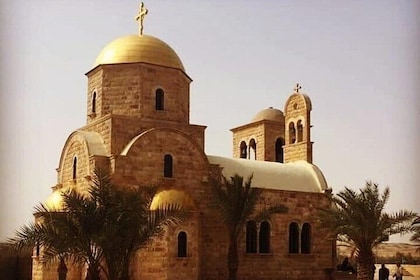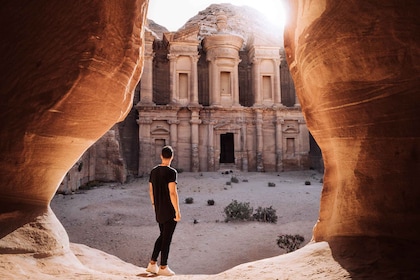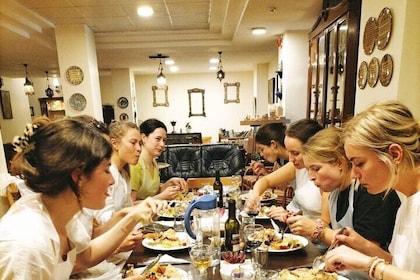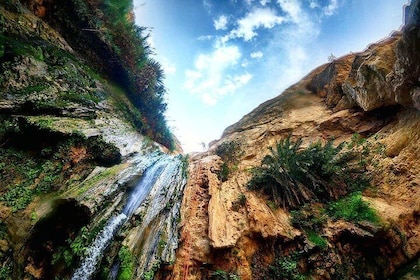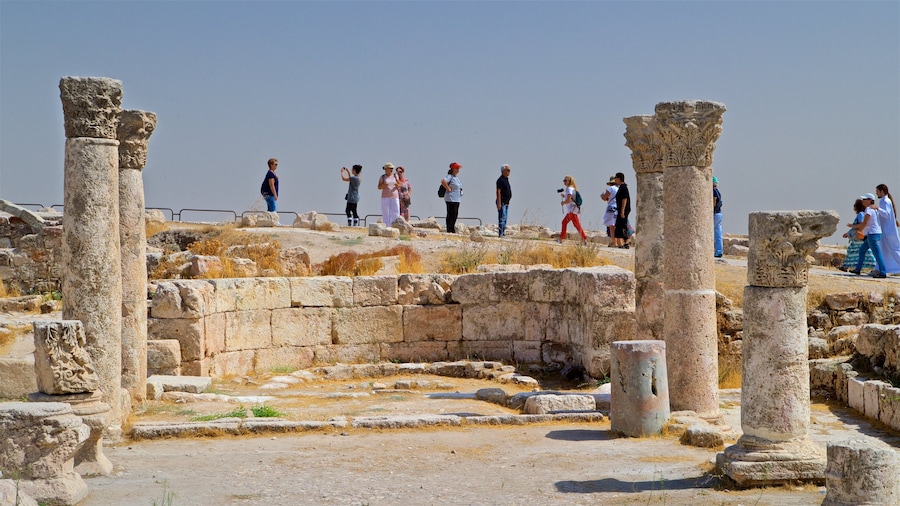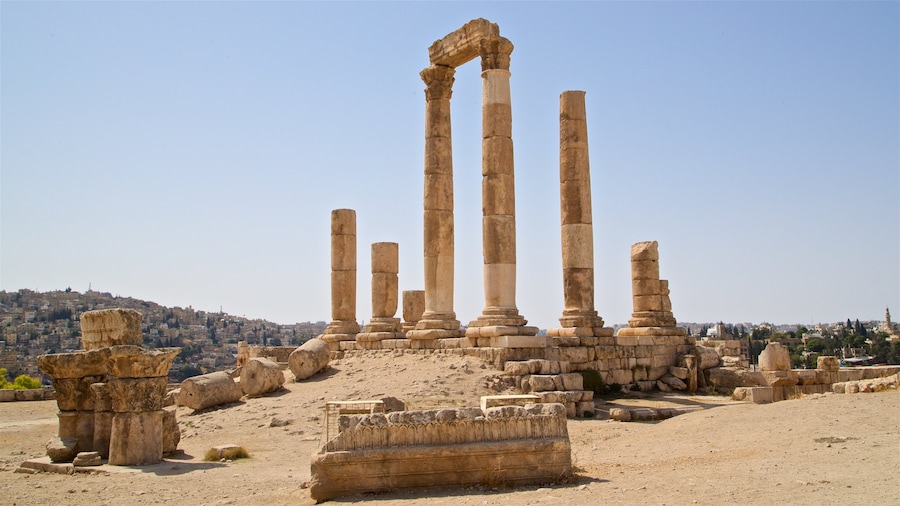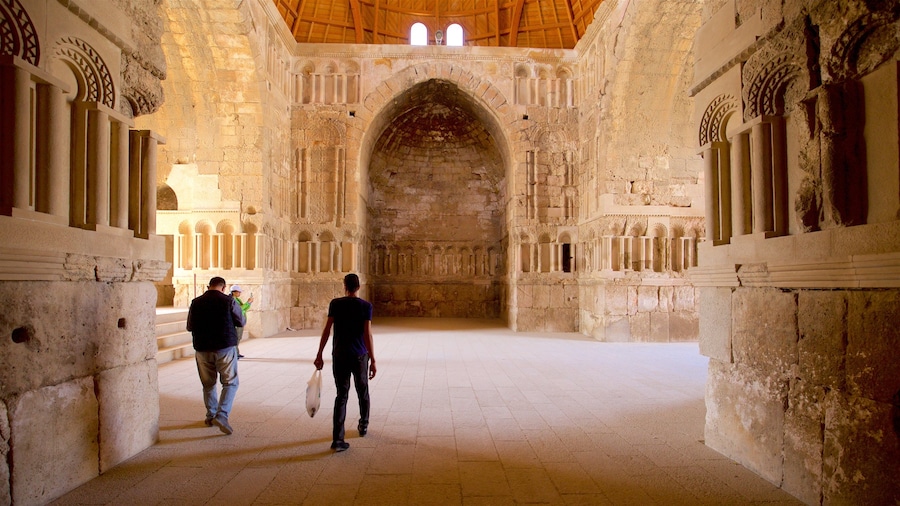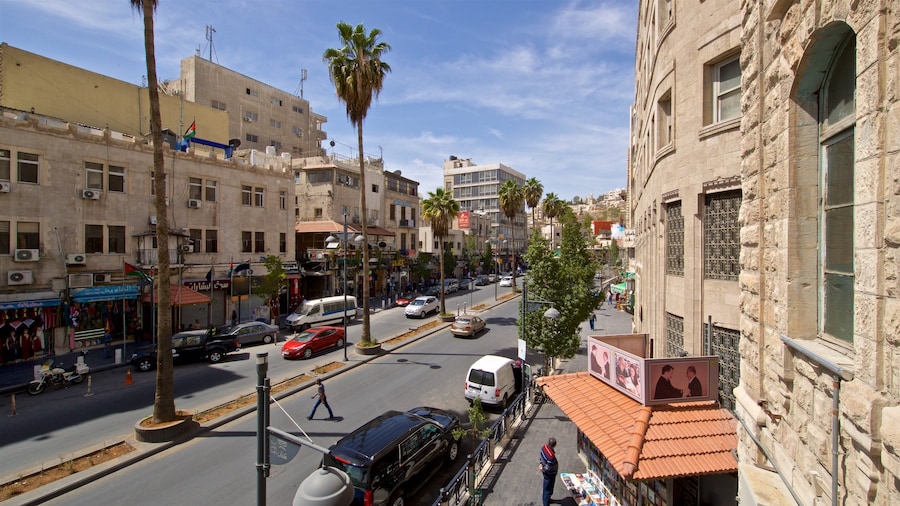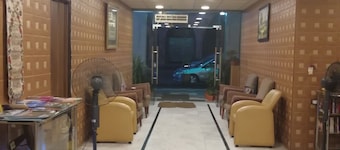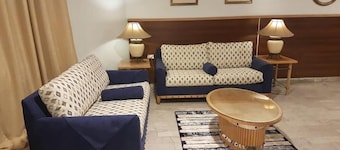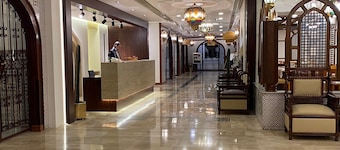Discover 6,000-year-old archeological wonders and some of the best views of Amman, one of the oldest-known cities in the world,
On the highest hill in downtown Amman is the Citadel, an impressive complex of ruins dating back to the Neolithic period. The ruins reveal architectural influences from the Iron Age and the Roman, Byzantine and Umayyad periods.
At the southern end of the complex is the Temple of Hercules, built between A.D. 162-166. This temple is larger than those of ancient Rome. Walk through the colonnaded entrance to the inner sanctum and then move on to stand by the large stones on the cliff edge, where there was once a staircase, and look out at the panoramic views of the city. Nearby are the white knuckles of an enormous marble hand, thought to be a remnant of a huge statue of Hercules.
The Umayyad Palace, believed to date back to the eighth century, is the best preserved of the buildings and the most impressive in the complex. Walk through the courtyard and the wide colonnaded street and enter the domed audience hall. Within the palatial complex is the governor’s house with a throne room.
By the palace is the Umayyad Cistern, which supplied water to the surrounding areas. The cistern once held approximately 250,000 gallons (950,000 litres) of rainwater. Follow the narrow stairs along the cistern wall, all the way to the bottom, to get a sense of the depth of it.
Also in the complex is the National Archeological Museum, where you can see an impressive selection of artifacts, including the Dead Sea Scrolls, a 6,000-year-old skull and the Ain Ghazal statues, which are some of the earliest sculptures ever discovered. South of the museum is the Byzantine Basilica. Walk between the columns on either side of the nave and look over the crest to see the remains of the Roman Temple of Hercules.
The citadel is a 20-minute walk from Amman’s downtown. The best way to get to there is by a taxi. If you walk to the citadel, note that the trail is steep and rocky, so wear good walking shoes.









